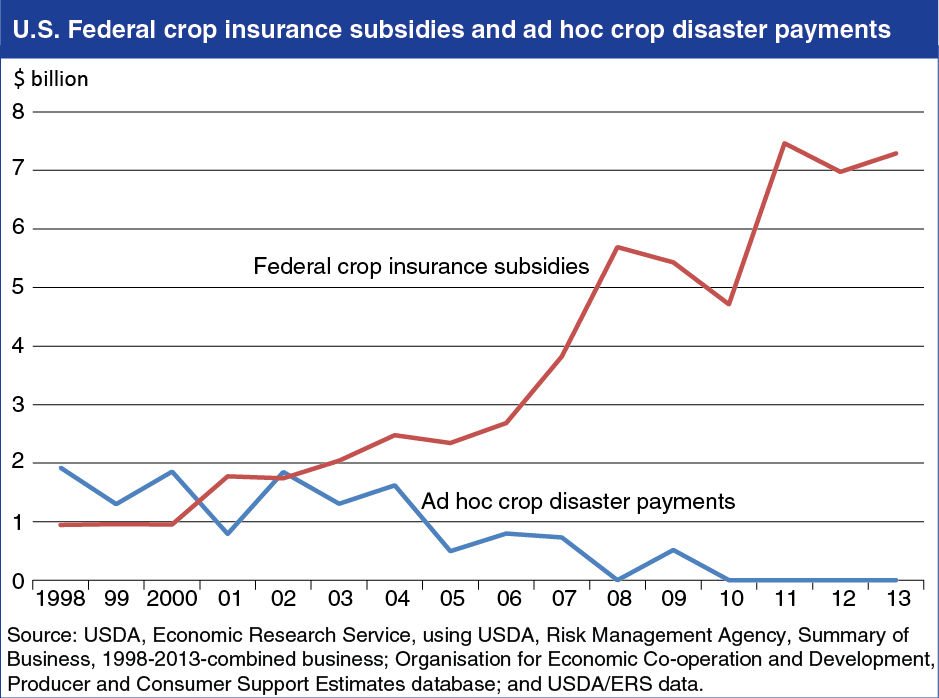U.S. crop insurance subsidies outpace ad-hoc disaster assistance payments
- by Erik O'Donoghue
- 10/24/2014

The Federal Crop Insurance (FCI) program and ad hoc crop disaster legislation both provide producer support when crop disasters occur. Participation in the Federal Crop Insurance Program (FCI) has grown steadily since the mid-1990s while outlays for ad hoc crop disaster payments have declined. Before the increase in participation in FCI, the FCI program was associated with widespread losses and poor enrollment and throughout the 1980s and into the 1990s, major crop losses were often associated with supplemental disaster legislation. FCI participation increased with the passage of the Federal Crop Insurance Reform Act in 1994, and again with enactment of the Agricultural Risk Protection Act (ARPA) in 2000. Ad hoc disaster assistance has subsequently declined with increased FCI participation. In 2012, with almost 80 percent of all cropland used for crops enrolled in the FCI program, no ad hoc disaster assistance was enacted despite the major U.S. drought and large associated crop losses. Find this chart and additional analysis in “The Importance of Federal Crop Insurance Premium Subsidies” in the October Amber Waves.


